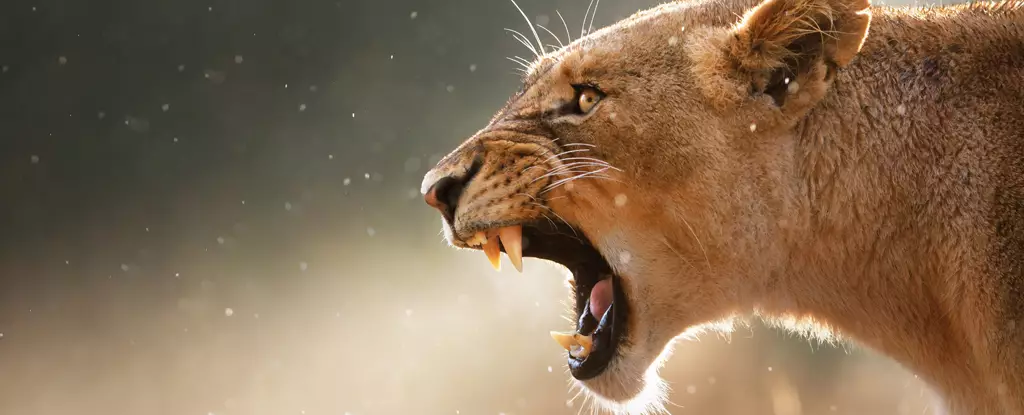At first glance, one could assume that the apex predator of the African savannah is none other than the lion, majesty personified with its sharp claws and fearsome fangs capable of intimidating any natural adversary. With their powerful muscles and social structure that allows them to hunt in coordinated groups, lions have long held this title among the terrestrial beasts. However, recent findings illuminate a surprising twist in this narrative: humans have emerged as the true sources of fear for wildlife, overshadowing even the formidable lion with their terrifying approach.
Renowned conservation biologist Michael Clinchy from Western University in Canada posits that the dread of humans is deeply entrenched within wildlife, marking us as the most significant threat to their existence. This understanding arises from an extensive study where researchers documented 10,000 recordings of animal behavior in their natural habitat, revealing that nearly 95 percent of observed species displayed profound alarm in response to human vocalizations, regardless of their immediate threat competency. The findings remind us that our presence often looms over other creatures like a spectral menace, lingering in a manner that is entirely disproportionate to that of any other animal.
In a groundbreaking research initiative published recently, Western University ecologist Liana Zanette and her team took their observations a step further. In South Africa’s Greater Kruger National Park, a realm home to the world’s largest lion population, they aimed to assess how various sounds influenced the behavior of local wildlife around waterholes. Their experiments involved broadcasting human conversations in multiple languages and mimicking the sounds of human hunting, including the barks of dogs and the crack of gunfire. Surprisingly, the results unequivocally pointed to one dominant factor: the unmistakable fear animals exhibit towards humans.
Clinchy notes that the soundscape specifically designed to include enabling features—like the intimate snarls of lion communication—was not as menacing as the chatter of humans. The purpose was to create conditions for a direct comparison. Notably, animal responses revealed a startling disregard for the established threat posed by lions when juxtaposed with human sounds, particularly conversations. Observations showed that 19 species, including elephants and rhinos, exhibited extreme avoidance behavior when humans were audible, opting to steer clear of potentially life-sustaining water sources.
The implications of these findings paint a grim picture for the ecosystems that share their territory with humans. As the research indicates, the resonance of human voices is not perceived merely as noise; it signals danger in the animal consciousness, influencing their mating, feeding, and migrating behaviors. In an ironic twist, animals that often embody strength and might—rhinos, elephants, and even lions—are unnervingly put to flight at the sound of our presence. The ramifications of this endemic fear could lead to significant population declines among species, as animals alter their behaviors to evade humans, ultimately affecting their reproductive success and survival.
The research highlights a concerning reality: this persistent fear does not merely stem from isolated hunting incidents or noise pollution but represents a broader commentary on human encroachment into natural habitats. The decline in populations, particularly among species like giraffes, is an urgent call for conservationists to reassess our role in wildlife circles. Recognizing that wild animals see us as looming threats is crucial for reevaluating how we interact with natural environments.
Yet, there may be glimmers of hope embedded within these findings. Conservation biologists are exploring ways to utilize the animals’ fear of humans as a protective measure for vulnerable species. Imagine strategically deploying recordings of human conversations near poaching hotspots, inadvertently serving as deterrents to threats like the Southern white rhino. The notion is compelling; while fear of humans may strike dread in the hearts of these creatures, it might also act as a protective mechanism.
Clinchy and Zanette work to underscore that our presence on the landscape goes beyond habitat destruction and resource depletion—our very existence is an omnipresent danger signal for wild fauna. By harnessing this understanding, wildlife enthusiasts and conservationists can pivot strategies to build more effective protective measures that resonate with both human and wildlife communities.
The narrative surrounding predators in the animal kingdom is not as it originally seemed. As terrifying as lions may be, it is humans who truly dominate the fear landscape. The challenge before us lies in redefining our role in nature—not merely as its conquerors but as stewards who can foster harmony instead of fear. Understanding this can reshape our perspectives on wildlife conservation, potentially shifting humanity towards a more conscientious path. The time has come for us to confront the monster we’ve become and to strive for a balance that benefits all creatures sharing this planet.


Leave a Reply